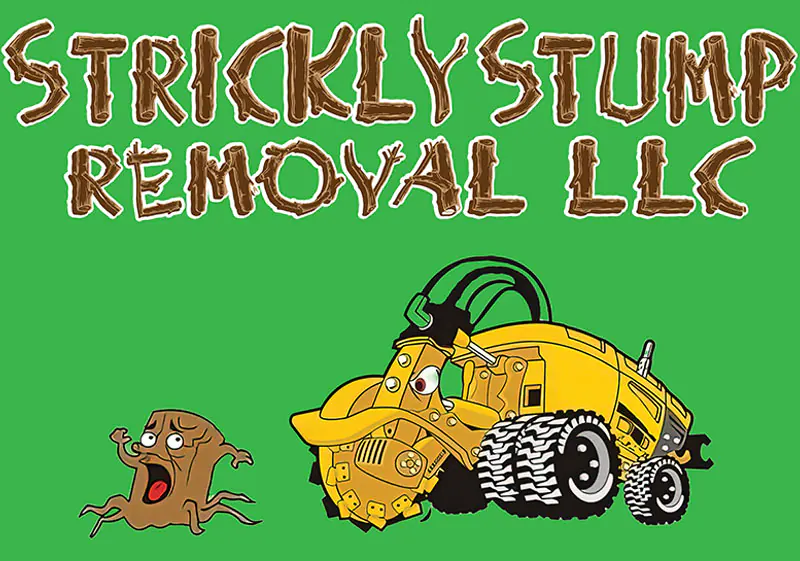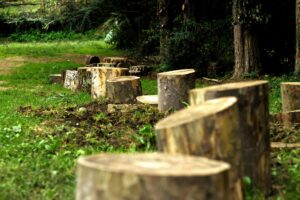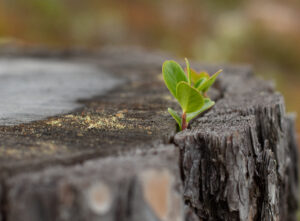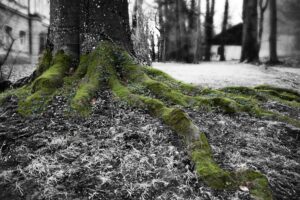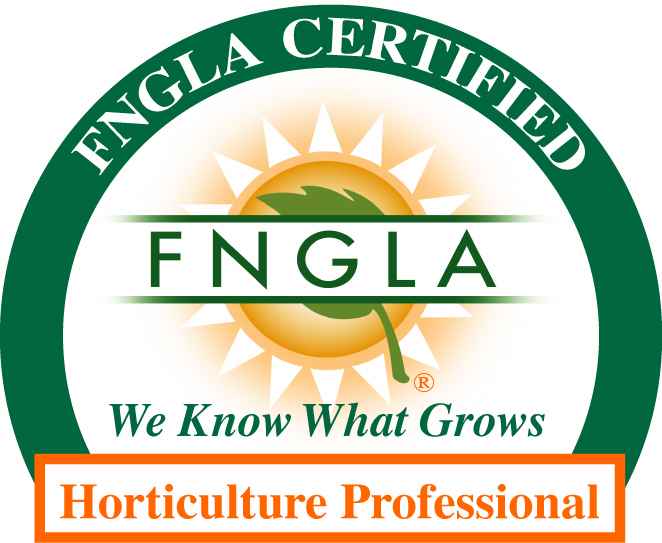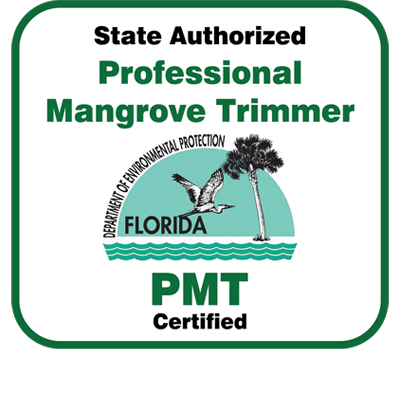Creative Solutions for Repurposing Wood Chips
Having a stump removed can be a surprisingly big deal! A big tree pruned or a tree stump ground out can change a lot. The first thing you’ll undoubtedly notice is how different the area where the tree or stump once stood is now…the wood chips will then become apparent. A ton of wood chips!
After trimming and removing trees, a substantial amount of wood remains. When a tree is chopped down or large branches are removed, massive branches and tree trunks are usually chipped into wood chips.You’re left with a sizable, possibly much larger-than-expected amount of chipped or shredded wood.
Similar to this, a stump grinder reduces the size of the tree stump. Although most homeowners choose to fill the hole with dirt, we often rake the stump grindings into the hole where the stump once stood. As a result, they are left with a heap of wood chips.
As you won’t be paying disposal costs, chipping wood on-site is convenient and reduces the overall cost of removal, trimming, or stump grinding. But the problem of what to do with all those wood chips is still there! In this blog post, we will give our top tips for using chips in this article so that you and your plants can benefit.
Wood Chip Mulch
Utilizing wood chips as an organic mulch in planting beds and around trees is the first and greatest thing to do with them.
Properly applied mulch inhibits weed growth, retains soil moisture, and regulates soil temperatures. Replacing any worn-out mulch, you currently have in your beds is a great way to repurpose wood chips.
To achieve effective soil insulation and weed prevention, it is advisable to apply a three-inch layer of mulch. A thin layer won’t provide these benefits.
Despite what you may think, as expert stump removal specialists, we know that mulching with wood chips doesn’t damage neighboring plants, draw termites and carpenter ants, tie up nitrogen, attract termites, or acidify the soil.
Composting
Wood chips are an excellent addition to your compost pile since they are a rich carbon source. Keep your compost pile one third “green” (or nitrogen-containing materials) and two-thirds “brown” (or carbon-containing materials) as a basic composting rule. To maintain the balance of your compost, gradually add chips over time due to their high carbon content.
Garden Walks or Paths
Your garden or lawn can benefit from a path made of chips that look natural and is good for the environment. Wood chips are simpler to arrange than pavers or stones, especially when working with curves.
Wood chips prevent weed development in addition to keeping the walkway from getting muddy because of their ability to absorb moisture. As stump removal experts, we have found that another fantastic option to give slippery walkways or surfaces in your yard traction is to cover them with wood chips. Layering at least two to three inches deep to construct a walkway made of wood chips creates a perfectly natural look.
Shredding Mulch
Laying cardboard over a mowed lawn and covering it with a thick layer of wood chips will kill the grass and compost it for you if you have a lawn area that you want to turn into a planting bed. You can continue to use the mulch and cardboard layers. Once you’ve decided what you want to plant, you can remove the compost with a rake, cut a hole in the cardboard, and dig the planting hole. Keeping the nutrients in your topsoil and grass to nourish your soil, this is significantly less labor-intensive than sod removal.
Conclusion
Repurposing woodchips has a variety of useful applications, including mulching, composting, erosion control, and the construction of pathways. You not only decrease waste but also support sustainable practices by giving new life to these stump-grinding remnants. If you want to create attractive, useful, and environmentally responsible settings, whether you’re a homeowner or a landscaping enthusiast, think about using woodchips in your efforts. With a little imagination and understanding, you can transform what was once considered waste into a beneficial resource that benefits both you and the environment. If you have a stump or a downed tree on your property, you may already have a natural source of wood chips. The removal of an unattractive stump and the reuse of its in other parts of your yard are both accomplished via stump grinding from large stump removal specialists.

